Rock thin-section analysis and identification based on artificial intelligent technique
He Liu , Yi-Li Ren ,*, Xin Li , Yn-Xu Hu , Jin-Ping Wu , Bin Li , Lu Luo , Zhi To ,Xi Liu , Ji Ling , Yun-Ying Zhng , Xio-Yu An , Wen-Ki Fng
a PetroChina Research Institute of Petroleum Exploration & Development, Beijing,100083, China
b Research Institute of Petroleum Exploration and Development, PetroChina Huabei Oilfield Company, Hebei Renqiu, 062552, China
Keywords:Thin-section identification Artificial intelligence Deep learning Computer vision Sedimentary reservoir
ABSTRACT Rock thin-section identification is an indispensable geological exploration tool for understanding and recognizing the composition of the earth. It is also an important evaluation method for oil and gas exploration and development. It can be used to identify the petrological characteristics of reservoirs,determine the type of diagenesis, and distinguish the characteristics of reservoir space and pore structure.It is necessary to understand the physical properties and sedimentary environment of the reservoir,obtain the relevant parameters of the reservoir,formulate the oil and gas development plan,and reserve calculation. The traditional thin-section identification method has a history of more than one hundred years, which mainly depends on the geological experts' visual observation with the optical microscope,and is bothered by the problems of strong subjectivity,high dependence on experience,heavy workload,long identification cycle, and incapability to achieve complete and accurate quantification. In this paper,the models of particle segmentation, mineralogy identification, and pore type intelligent identification are constructed by using deep learning,computer vision,and other technologies,and the intelligent thinsection identification is realized. This paper overcomes the problem of multi-target recognition in the image sequence, constructs a fine-grained classification network under the multi-mode and multi-light source,and proposes a modeling scheme of data annotation while building models,forming a scientific,quantitative and efficient slice identification method. The experimental results and practical application results show that the thin-section intelligent identification technology proposed in this paper does not only greatly improves the identification efficiency, but also realizes the intuitive, accurate and quantitative identification results, which is a subversive innovation and change to the traditional thin-section identification practice.
1. Introduction
Rock thin-section identification is one of the indispensable geological exploration tools to understand the earth.It is also one of the important evaluation means of oil and gas exploration and development. It can be used to identify the petrological characteristics of reservoirs, determine the types of diagenesis, and distinguish the characteristics of reservoir space and pore structure.It is essential for understanding the physical properties and sedimentary environment of the reservoir, obtaining the relevant parameters of the oil and gas reservoir,and formulating the oil and gas development plan and reserve calculation.It has the features of intuitive indication, rapid evaluation, simplicity, accuracy, economy, and practicality.
Traditional thin-section identification depends on experts' visual observation of rocks under the optical microscope, and it is imperfect in several aspects. First, the workload is arduous to complete with limited human resources if there are numerous rock samples to be identified. Thin-section identification requires repeated observation of single-polarization and orthogonal polarization at multiple angles, and may also rely on fluorescent luminescence and other means. Even an experienced professional may take at least 4 h to complete the identification of one sample. In addition, the training of qualified identification professionals is a long process. The number of experienced professionals is dwindling, and there is a shortage of young successors. Second, the identification based on naked-eye observation is persondependent and cannot ensure accurate and quantified results. In traditional identification,a single field of view is observed under an optical microscope and then the overall situation is inferred based on the observation of multiple single fields of view. The identification results of the same sample may be different due to the differences in appraisers’ experiences and perceptions. Third,traditional identification relies on physical sample delivery and visual observation, but thin-section samples upon prolonged storage may turn yellow and degummed, which will affect the identification results and eventually lead to losses of assets.
In the process of thin-section identification, the images will be repeatedly observed under multiple light sources and multiple angles to determine the mineral composition,pore type,and other information.As such,intelligent thin-section identification is not a simple image classification or image segmentation problem but needs to consider multiple sequence images for judgment.Compared with the big data on Internet, the data on rock thin section samples are minimal, so intelligent thin-section identification is challenged by multi-target identification of minimal samples.In this paper,several intelligent models,such as intelligent identification of mineral components and automatic statistics of content, automatic extraction of pores and intelligent determination of pore types, intelligent prediction of rock structure, and comprehensive naming of lithology, are constructed by using semantic segmentation, instance segmentation, image classification,target detection, and other technologies. The supervised learning method is adopted. Firstly, the data are labeled by the rock and mineral identification experts,and then the intelligent thin-section identification is done by combining the expert experience with the artificial intelligence algorithm and integrating the geological knowledge. Compared with the traditional identification procedures based on visual observation, the procedure proposed in this paper can realize accurate, quantitative identification of thin sections and intuitive and comprehensive display of results, and thus provide more quantitative,accurate,and comprehensive basic data for the study of sedimentary reservoirs.
2. Related work
With the rapid development of deep learning technology, artificial intelligence(AI)has set off the third wave of application.The upgraded scanning instruments allow a large number of thinsection images relating to oil exploration and development to be accumulated, laying a foundation for intelligent analysis. In recent years, deep learning technology has been rapidly and extensively promoted in the field of image analysis. Its application to massive images of rock thin sections for further intelligent identification will be a critical replacement to traditional identification procedures. Many professionals have worked successfully in thin section image capture and intelligent identification.
For thin section image capture, the upgraded hardware facilitates the collection of massive, standard, and normative images of rock thin sections.Several mainstream microscopy systems,such as Zeiss Axio Scan, have been launched. Unlike traditional polarizing microscopes with deviation in field of view during stage rotation,the mainstream microscopy systems can realize alignment analysis of sequence images by acquiring orthogonal polarization images at different angles by rotating the upper and lower polarization angles while the stage is not moving,thus making intelligent identification possible.
Thin-section intelligent identification, which is at the rising stage, is mainly used in rock classification, particle segmentation,pore extraction, and other aspects. In rock classification, a deep learning network is used to build a classification model,with less or no complex and tedious steps like that in traditional image processing procedures, facilitating a more automatic thin-section identification (Cheng et al., 2013; Wei et al., 2014). For example,Xu et al. utilized the convolution neural network, ResNet-18, to automatically classify the thin-section images of metamorphic rocks, igneous rocks, sedimentary rocks including clastic and carbonate (Xu et al., 2020). Nanjo et al. proposed an image analysis technology for carbonate rock lithology recognition based on a deep neural network. A convolution neural network was used to train and classify 306 slice images of four rock components such as particle, cement, pore, and plaster,and achieved a test accuracy of 83.9%, which confirmed the advantages of machine vision technology in visual recognition to a certain extent(Nanjo et al.,2019).
As for particle segmentation, image processing technology or deep-learning algorithm is used to segment and extract rock particles and identify their edge contour, providing the basis for intelligent thin-section identifications and quantitative analysis of compaction (Budennyy et al., 2017; Buono et al., 2019; Pattnaik et al., 2020). For example, Samet et al. proposed a fuzzy rulebased image segmentation technique for rock thin section images(Samet et al., 2013). Moreover, thin-section identification involves comprehensive observation of the morphology under singlepolarization and orthogonal polarization. Therefore, the particle segmentation of rock thin sections combined with orthogonal polarization is a more practical standard for geological identification(Cai et al., 2020; Si et al., 2020; Jiang et al., 2020). For example,considering the extinction features of rock thin section itself, Hu et al. proposed a sequence image analysis system for rock thin sections based on continuous extinction feature analysis under orthogonal polarization by analyzing the difference of extinction features of mineral components and combined with digital image processing technology(Hu et al.,2012). As for pore extraction, the edges of pore are extracted by using image processing technology,and some articles introduced procedures related to the simple identification of throats(Ma and Gao,2017;Tu et al.,2018;Cai et al.,2020).For example,Zhang et al.conducted the correlation analysis of pixel scale in the extinction angle dimension based on the extinction feature of orthogonal polarization sequence images.During the course, particle segmentation and pore extraction are realized by using sensitive parameters such as correlation coefficient mean and standard deviation (Zhang et al., 2020).
To sum up, the literature about intelligent thin-section identifications mostly focuses on some tasks such as particle segmentation and pore extraction, thus not thorough and systematic in content. Moreover, the research methods are usually based on image processing technology, but cannot integrate the geological experiences of rock/mineral identification experts. In addition,intelligent thin-section identification remains blank in core analysis, such as mineral composition identification, pore structure analysis, and rock structure analysis. We still cannot say that the thin-section identification is a complete quantitative analysis and evaluation. Therefore, it is urgent to build a deep learning model integrating geological knowledge to realize scientific and quantitative intelligent thin-section identification.
3. General scheme
Thin-section identification of clastic rocks includes four parts(Fig.1): (1) identification and statistics of mineral types and contents and cement composition and contents; (2) identification of reservoir pore features and determination of reservoir pore genetic type and pore structure; (3) observation and identification of microstructures such as particle size, sorting, cementation type,support type, and contact mode; and (4) precise classification and naming of rocks.The general scheme can be divided into five steps(Fig. 2):
Step 1. Image capture: Use the full-auto slide scanner to capture images at six angles of single-polarization and orthogonal polarization(which are changed by rotating the orthogonal polarization)while the stage is not moving.The images captured are the images of slide specimen in full view after stitching.
Step 2. Data labeling: (Rock and mineral identification experts)Label the edge of rock particles,clastic components,pore types,and other features according to the industry standards for thin-section identification. Features for labeling under single polarized light include particle shape, crystal shape, cleavage, color, protrusion(polychromism), rough surface, dyeing, and others. Features for labeling under orthogonal polarization include mineral extinction,interference color level, bicrystal type, cleavage, secondary alteration characteristics, mineral symbiosis combination, stress transformation characteristics, rock structure, interstitial filling,alternation,aggregate,and others.In this study,the human-in-theloop modeling method was adopted to realize simultaneous modeling and labeling.After labeling a certain number of samples,construct the neural network model immediately, and subsequently, calibrate on the results predicted by the model. Thus, the labeling activity is transited from manual to semi-automatic.
Step 3. Deep-learning modeling:Use Residual Network(ResNet),Dense Convolutional Network (DenseNet), Mask Region Convolutional Neural Network (Mask R-CNN), Conditional Generative Adversarial Networks (GAN), and other neural networks to construct intelligent prediction models based on sequence images.Such models involve particle segmentation, clastic component identification, and pore type determination.
Step 4. Intelligent identification:Realize intelligent identification with one click.
Step 5. Automatic report generation: Generate the identification report automatically and let experts correct the report.

Fig.1. Contents of intelligent thin-section identification of clastic rocks.

Fig. 2. Scheme for intelligent thin-section identification of clastic rocks.
4. Intelligent thin-section identification of clastic rocks based on deep learning
In this study,the particle segmentation model is constructed for clastic rocks through image processing, super-pixel segmentation,and instance segmentation. Based on particle segmentation, the particle edge and corresponding category of each mineral are identified,to determine the contents of mineral components.At the same time,the particle edge identified by the particle segmentation model is used to calculate the indexes such as sorting, roundness,and cementation type, and the particle size distribution map is generated through statistic calculation.Finally,the comprehensive name of lithology is given according to the content of mineral components and particle size distribution. Furthermore, semantic segmentation technology is used to realize pore edge extraction and corresponding pore type recognition, thus realizing the intelligent analysis of pore type based on thin section.
4.1. Particle segmentation
Particle segmentation is the basis of intelligent thin-section identification and the first step of automating the process of thinsection identification. Particle segmentation can provide quantitative data basis for clastic component identification, diagenesis evaluation,pore throat extraction,and others.The main difficulty in particle segmentation with thin sections is that the particles are huge in quantity and dense in distribution, with irregular shapes,inconsistent sizes, and diversified textures. In this study, the maturing digital image segmentation algorithm (represented by watershed algorithm, threshold segmentation, and edge detection algorithm),super-pixel classification,and deep learning(which are excellently performed in semantic segmentation and instance segmentation)are combined to realize the intelligent and accurate segmentation of rock particles.
4.1.1. Particle segmentation based on multi-angle image
Most mineral particles of clastic rocks have fuzzy edges, which makes particle segmentation very difficult. The particle edge cannot be determined accurately based on single-polarization alone. The extinction of mineral particles under different angles of orthogonal polarization can make particle edges more obvious and easier to segment. Therefore, a particle segmentation technique based on sequence images composed of single-polarization and orthogonal polarization is proposed in this paper.
In this method, the target mineral particles are segmented by Hue, Saturation, Value (HSV) color space, K-means, and other algorithms through simultaneous application of single-polarization images and orthogonal polarization sequence images of thin sections(Fig.3).Fig.4 shows the effect of particle segmentation based on multi-angle images. This method solves the problems of fuzzy particle edge and particle adhesion by superposition of multiple mask images, to realize the accurate segmentation of mineral particles in a thin section image.
4.1.2. Particle segmentation based on superpixel
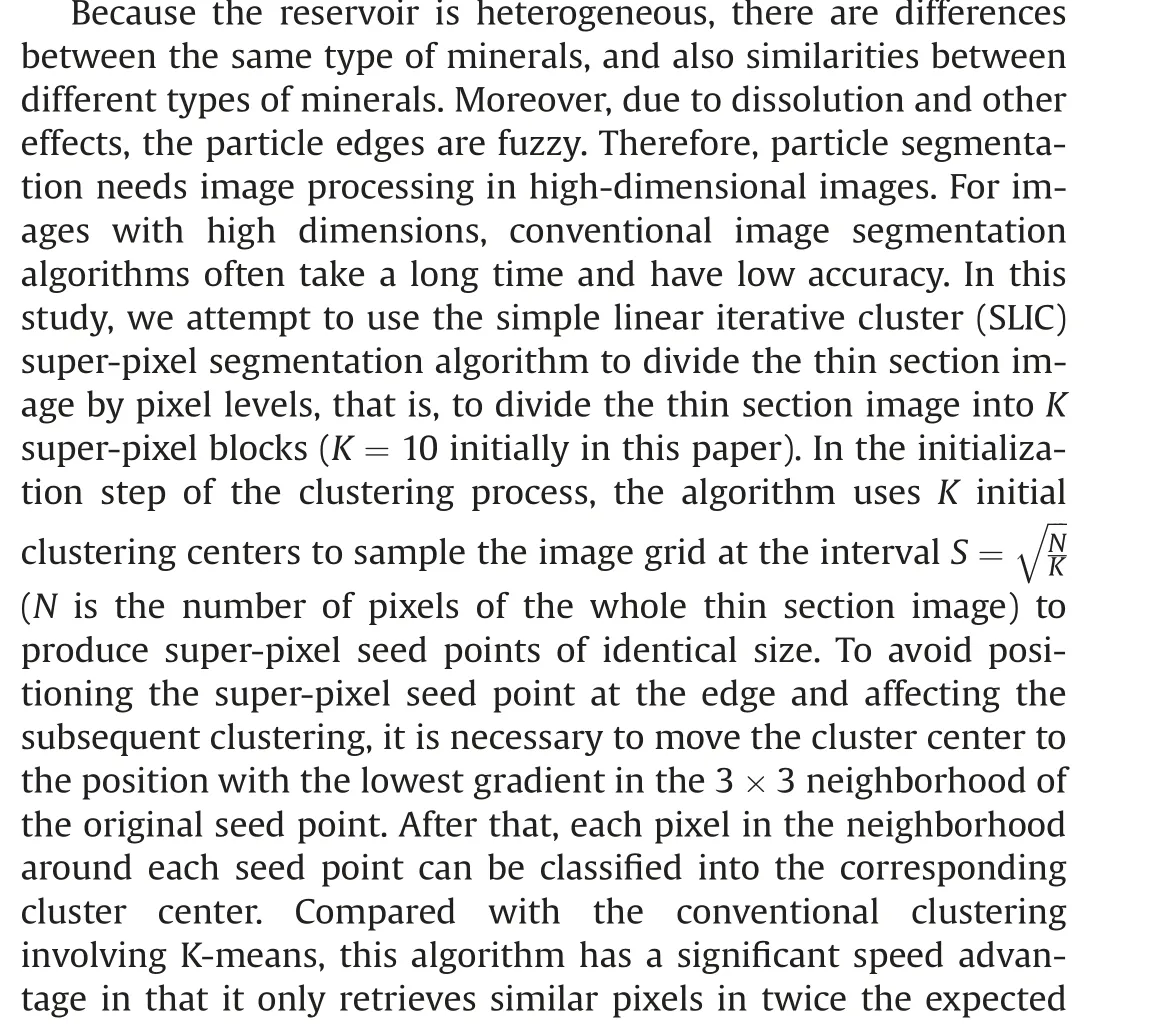

Fig. 3. Particle segmentation based on multi-angle images.

Fig. 4. Effect of particle segmentation based on multi-angle images.



Fig. 5. SLIC reducing super pixel search area.
where,(lj'aj'bj)and(li'ai'bi)are coordinates of the searched pixels and seed points in the color space; (xj'yj) and (xi'yi) are coordinates of searched pixels and seed points in plane space. Eventually,the corresponding distance measurement D′can be obtained through color distance and spatial distance:

The distance between each pixel and the seed point is calculated through this distance measurement formula. The seed point with the smallest distance is taken as the clustering center of the pixel point,and the pixel-based segmentation is realized via continuous optimization and iteration. Finally, similar super-pixel blocks are combined to realize the segmentation and extraction of rock particles (Fig. 6).
4.1.3. Particle segmentation based on deep learning
Affected by factors such as dissolution and compaction, some particles have fuzzy edges and particle fragmentation.In this case,unsupervised learning cannot accurately segment rock particles.In this study, we construct a deep learning particle segmentation model based on instance segmentation, which can integrate experts' experiences into the intelligent model.
Image segmentation based on deep learning can be divided into three categories: semantic segmentation, instance segmentation,and panoramic segmentation.Semantic segmentation refers to the process to classify all pixels in the image, and it can predict the mineral category of each pixel in a thin section image. Instance segmentation is the combination of object detection and semantic segmentation. Compared with semantic segmentation, instance segmentation involves labeling different individuals of the same object on the image.Panoramic segmentation is the combination of semantic segmentation and instance segmentation, and realizes the detection and segmentation of all objects, including the background,in the image.

Fig. 6. Process and effect of SLIC super pixel segmentation of thin sections.
In this study, Mask R-CNN is used to construct the particle segmentation model. Using the idea of transfer, the pre-trained instance segmentation model is transferred to the task of particle segmentation via learning migration. By training the constructed data with the label, the segmentation model suitable for the segmentation of rock particles is obtained through simultaneous training,labeling, and fine-tuning.
Fig. 7 shows the framework of the particle segmentation network. Extended based on the target detection network Faster R-CNN, Mask R-CNN has a new branch structure for predicting targets added to the edge recognition branch structure of the original network in parallel. As for the basic skeleton network,ResNet series networks with better generalization performance and stronger expression ability are selected as convolution structures to extract features.At the same time,a feature pyramid network(FPN)is adopted to acquire multi-scale data and take into account the characteristics of shallow and deep layers. As for the selection of candidate areas, a region proposal network (RPN) is deployed to generate the recommended area.In addition,the bilinear difference method is introduced to align the generated region, to solve the problem of mismatch between the feature image and the target region of the original image caused by quantization operation in the process of multiple pooling. Finally, the full convolution network is used to receive the input image of any size, the full connection layer and softmax are used to classify the target areas,the full connection layer and bounding box regression are used for coordinate prediction,and the full convolution network is used for pixel-by-pixel mask prediction. In this way, the Mask R-CNN network can realize pixel-level instance segmentation in the target segmentation task.
A total of 210,000 thin-section images of clastic rocks (single polarization + orthogonal polarization at 6 angles) were collected in this study. By using the supervised learning method and the procedure of simultaneous modeling and labeling,the label sample library is constructed. Besides, the particle segmentation model based on Mask RCNN is constructed (Fig. 8).
In the index evaluation,we took 7000 images as the test set and selected R-CNN,Faster R-CNN,and other networks for horizontal comparison to verify the comprehensive performance of the particle segmentation network based on Mask R-CNN.The number of batch processing samples in model training is 64,and the learning rate is set to 0.0001.After 300 iterative training,the test results are shown in Table 1. It can be seen that the particle segmentation network based on Mask R-CNN proposed in this paper is better than the above-mentioned image processing, super-pixel segmentation, R-CNN, Faster R-CNN, and other deep-learning segmentation schemes.
4.2. Intelligent identification of clastic components based on sequence images
The component identification is the essential and most difficult part of thin-section identification of clastic rocks. Component category will be determined with the help of multiple light sources.The characteristics of components should be observed under both single-polarization and multiple angles of orthogonal polarization.In this study, the convolutional neural network (CNN) and recurrent neural network (RNN) are used in combination with a multimodel cascade. The category of each component particle is determined by analyzing its characteristics at various angles.
In this study, while the stage is not moving, the full mosaic images are captured under single-polarization and orthogonal polarization at 6 angles. Then, the component recognition sample library is constructed. There are more than 700,000 component particles in the library, which is used to build the component intelligent identification model. Table 2 shows the details of components by intelligent identification.
The identification of clastic rock components needs to consider the characteristics of components in a single image, and also the time-order characteristics of components under different light sources. In this study, a clastic rock component identification network based on CNN + RNN is proposed, and its framework is shown in Fig. 9.
CNN adopts ResNet34 as the convolutional network architecture for spatial feature extraction.At the same time,the last convolution layer of CNN is followed by the long short-term memory (LSTM),which is a special RNN network and can alleviate the gradient disappearance problem of RNN to a certain extent. Through the LSTM layer,the particle sequence features extracted from the CNN layer flow in the time flow,and the characteristics of all-time flows are aggregated through time pooling, to extract the time-order features of mineral particles. On this basis, the deep-seated particle characteristics are trained iteratively until the loss is minimized.

Fig. 7. Framework of particle segmentation network based on Mask R-CNN.
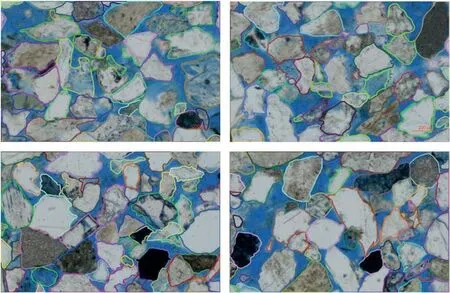
Fig. 8. Effect of particle segmentation model based on Mask R-CNN.

Table 1 Results of Mask RCNN and other segmentation networks.
The results of intelligent clastic rock component identification are shown in Fig.10.With this model,we can accurately identify the edge and category of each component in the image, and quantify the proportion of each component.In this study,10,000 images are used as the test set,with 128 batch processing samples and 0.0001 model learning rate for 500 iterations. The identification accuracy of 16 components (e.g. quartz, feldspar, acid extrusive rock, medium basic extrusive rock, sedimentary rock, metamorphic rock,intrusive rock, mica,argillaceous, calcite, dolomite, and authigenic clay minerals)reaches more than 85%.Fig.11 shows the ROC curves.
4.3. Rock structure analysis
Rock structure is an important factor to understand the rock properties and structure of thin sections.In this study,the analysis of rock structure mainly involves weathering degree, sorting,roundness, cementation type, and particle contact relationship.
4.3.1. Weathering degree
By collecting a large amount of historical identification data,we use the CNN network to build a weathering prediction model.This paper compares several classification models such as VGG,RESNET,and DenseNet.Finally,the ResNet model with the best performance in the test data set is selected as the prediction model of weathering degree,and the accuracy is more than 90%.
4.3.2. Sorting
Sorting indicates the sorting degree of debris particles, which are generally divided into good, moderate, and poor according tothe proportion of the same particle size in the debris content.Based on the particle edges identified with the three schemes in Section 2.1, the size of each particle is statistically calculated, and the corresponding size distribution is plotted. Finally, the image processing related algorithm is used to count particles with variable sizes to determine their sorting. If the particles with a certain size account for 75%or more of the total debris,the sorting is classified as“good”. If the particles with a certain size account for more than 50%but less than 75%of the total debris,the sorting is classified as“moderate”.

Table 2 Intelligent identification and classification of clastic rock components.

Fig. 9. Framework of clastic rock component identification network based on CNN + RNN.

Fig.10. Results of intelligent clastic rock component identification. Precision = 0.85, recall = 0.87, F-measure = 0.86, accuracy = 0.88.
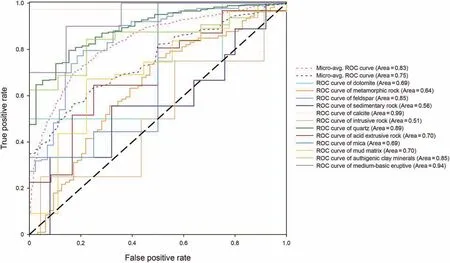
Fig.11. ROC curves for intelligent clastic rock component identification.
If the particle sizes are more scattered and do not meet the first two cases, the sorting is classified as "poor".
4.3.3. Roundness
Roundness is a summary of how the particles in the thin section are round. It is generally divided into five levels: angular, subangular, subrounded, rounded, and very rounded. In this study,template matching is used to identify the target particles. This simple, less computation demanding, and accurate algorithm is very adaptable to the determination of roundness.Basically,it is to find the coordinate position between the template image and the source image through the calculation of the correlation function.As shown in Fig.12, for temperate image T, assuming that it is translated in the source image S,and the area covered by the template is a sub-source image, with (x'y) as the coordinate of the left-up corner of the sub-source image in the entire thin-section image,the sub-source image is compared with the template image, and their deviation D(x'y) is determined as follows:

If D(x'y) is less than the set threshold, it is considered that the roundness of the sub-source image is consistent with that of the template image.
Similarly, the roundness of all sub-source images in the thin section is obtained, and the roundness levels with the highest content in each level of roundness are counted. When there are multiple roundness levels with high contents,the roundness of the entire thin section is named an ascending order as subangular-subrounded, subrounded-very rounded.
4.3.4. Particle contact relationship
Based on particle segmentation, we propose a scheme for intelligent identification of particle contact relationships (Fig.13).With four steps: (1) segmentation of rock particles; (2) identification of the shared edges among particles by using the eightneighborhood shared boundary discrimination method; (3)extraction of particle contact boundary by using image processing algorithm; and (4) determination of particle contact relationship,the number of point contacts, line contacts, concave-convex contacts and suture contacts can be determined.
4.4. Intelligent analysis of pore structure
Pores are the space for oil and gas accumulation in the reservoir.Most pores are widespread between particles, and a small proportion may exist inside particles. Pores are diverse (e.g. intergranular pores, intergranular dissolved pores, intragranular dissolved pores, intergranular micropores, etc.) and confusable.Identifying the specific types of pores requires strong professional knowledge and experience. Storage capacity analysis mainly involves pore type, plane porosity, pore diameter, and others. The intelligent analysis of pore structure is based on the accurate extraction of pores and the automatic determination of pore type.
The key to intelligent analysis of pore structure is to identify the pore edge and type so that the plane porosity, pore size distribution,and the proportion of each pore type can be calculated.In this study, the Path Aggregation Network (PANet) is adopted for the extraction and identification of pores through semantic segmentation.As shown in Fig.14,by way of bottom-up path enhancement,PANet can effectively enhance the acquisition of location information in the bottom layer and then shorten the information path between the bottom layer and the top layer. In addition, it can restore the damaged information path between the candidate region and the feature level through the pooling of adaptive features to aggregate the candidate regions on each feature level. Finally,pore classification, boundary box regression, and mask prediction by the full convolution network are conducted for the candidate regions, to complete the segmentation and identification of target pores.
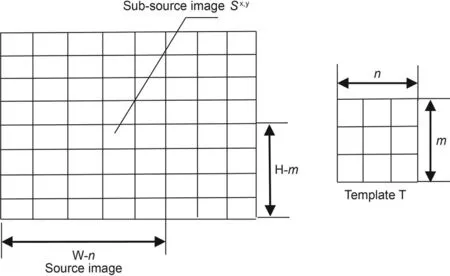
Fig.12. Diagram for template matching.
In this study,10,000 thin section images with good pore quality are selected,and the training,verification,and test data are divided by 8:1:1. The thin section data pre-labeled with pore contour and attribute are loaded into the segmentation network for 500 training iterations. Thus, the segmentation of rock pores is realized, with a segmentation accuracy of 81%.
Additionally, other related pore structures can be intelligently analyzed. For example, through the connected domain analysis of the segmented pores, and using the edge detection algorithm to detect the pore contour, the pore area siis obtained by using the contour area()function in image vision.Then,the plane porosity L is obtained by summing all pore areas and dividing them by the overall area Z of the entire thin section:

Based on the above pore segmentation and pore contour area acquisition, the corresponding equivalent diameter of pores is obtained, and the corresponding number of pores is calculated according to different pore size ranges, to obtain the pore size distribution map.At the same time,the content proportion of each pore type is calculated based on pore edge extraction and pore type identification.
4.5. Lithology naming
According to the petroleum and natural gas industry standard of the P.R.C.
In terms of particle size,the areas of the extracted rock particles are counted by using the image processing technology based on contour.
Area () function, and the size of the rock particles in the entire thin section is determined by calculating the equivalent circle diameter on the basis of particle segmentation and extraction in Section 2.1. After the proportion distribution of particle content in mineral components at each particle size is determined, the particle size of the thin section is designated (as fine to very fine,medium to very fine, etc.) according to the particle size naming principles. Concerning rock naming, attribute identification and identification are conducted for the mineral particles extracted from the thin section images based on the intelligent identification of mineral components in Section 2.2, and then the content proportions of quartz, feldspar, flint, and other debris are determined to complete the rock naming according to the practice shown in Fig.15. By combining the particle size naming and rock naming, the naming of the entire clastic rock thin section is completed(Fig.16).

Fig.13. Flow chart of automatic extraction of particle contact relationship.

Fig.14. Effect of pore segmentation network based on PANet.
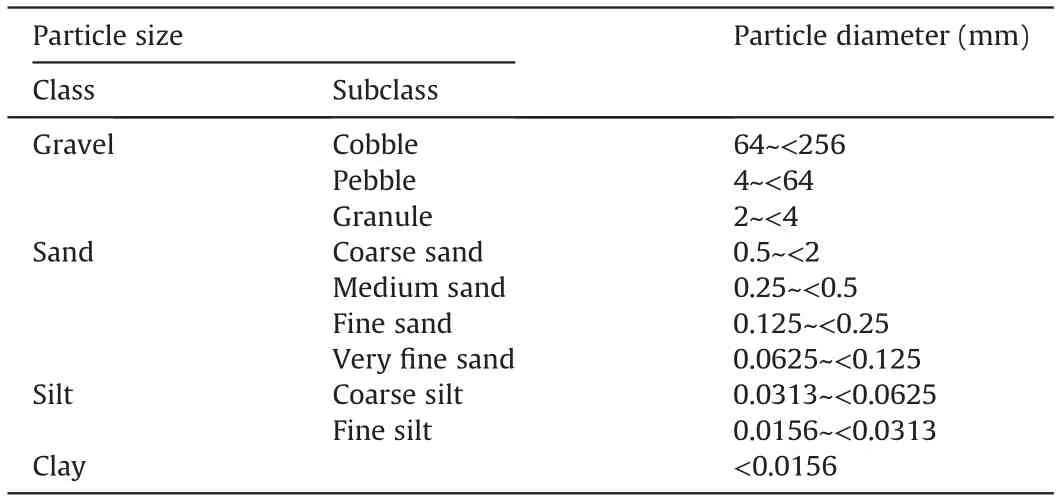
Table 3 Criteria for particle size of mineral components in clastic rocks.

Fig.15. Rock naming and classification triangle.
4.6. Comparison between artificial identification and intelligent identification
Taking sandstone in Hetao Basin as an example, this paper compares the effects of intelligent identification and manual identification.Fig.17 shows the identification results of a sandstone sample. The red box in the upper part represents the manual identification report,and the blue box in the lower part represents the intelligent identification report. It can be seen that the identification results of the two are consistent, but the results of intelligent identification are more quantitative and accurate.At the same time, the intelligent identification can also output rock particle segmentation map,mineral composition distribution map,particle size distribution map, pore size distribution map, particle contact line distribution map, compaction index, roundness index, and other indicators.That is,the results of intelligent identification are more comprehensive,more intuitive,and more quantitative.
The results of the intelligent identification of mineral components are shown in Fig. 18. Intelligent identification cannot only directly output the distribution map of mineral components, but also quantitatively count the proportion of each mineral component. Traditional identification is to select a representative field of vision to estimate the whole sample,resulting in only the estimated value of each mineral content. It cannot intuitively show the distribution of mineral composition,nor can it accurately calculate the content of each mineral.
The intelligent analysis of pore structure is shown in Fig.19 and Fig. 20. The semantic segmentation network is used to extract the edge of the pore and determine the type of pore.On this basis,the pore size distribution map and the proportion of pore content can be output. Traditional identification is only to output the types of pores and the estimated proportion of each pore content contained in the thin section sample. It can neither directly display the distribution of pore structure and pore size distribution map,and nor accurately calculate the content of each type of pores.
Because intelligent identification can accurately identify the edge of rock particles,it can quantitatively and accurately calculate the rock structure indexes such as particle size distribution,sorting,roundness,and weathering.The results of intelligent identification of rock structure are shown in Fig. 21. Because traditional identification is a visual observation,it can only be judged qualitatively and cannot output a quantitative index.
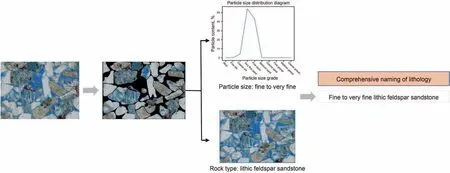
Fig.16. Example of comprehensive naming of lithology based on mineral composition analysis.

Fig.17. The results of artificial identification and intelligent identification.
5. Application of intelligent thin-section identification of clastic rocks in reservoir characterization
Thin-section identification is the most intuitive and informative experimental method in reservoir research,and also an important means of sedimentary reservoir characterization. The results of traditional artificial identification methods are always qualitative to semi-quantitative, as such thin section research cannot be accurately related with relevant quantitative experimental methods,left far behind the requirements for the fine evaluation of reservoirs and the research of highly heterogeneous reservoirs. In contrast,intelligent identification can quantitatively extract information such as particle contact relationship, clastic component content,rock structure type, pore type, and content, and provide quantitative basic data for sedimentary reservoir research. Intelligent identification can be applied to the study of pore evolution and displacement mechanism, quantitative analysis of diagenesis,intelligent integration of thin section and logging processing &interpretation,and other aspects,so as to realize the quantification,accurate research,and evaluation of sedimentary reservoirs.
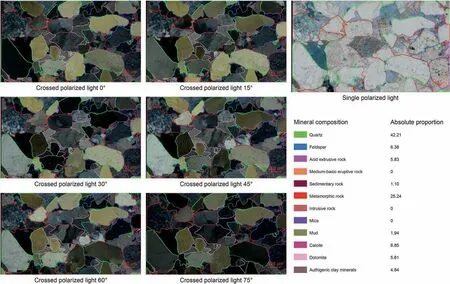
Fig.18. The results of intelligent identification of mineral components.

Fig.19. The results of pore segmentation and proportion.
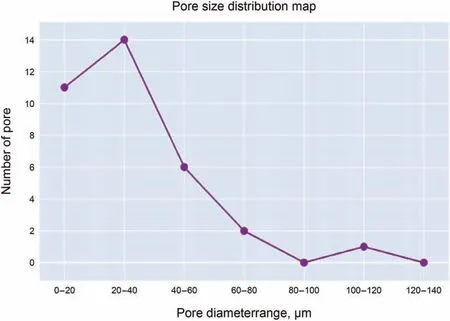
Fig. 20. Aperture distribution diagram.
5.1. Accurate quantitative study of sedimentary reservoirs based on intelligent thin-section identification
Clastic components, rock structure, and pore structure derived from thin-section identification can be widely used in sedimentary reservoir characterization. By using the various patterns of stable mineral contents in clastic components and rock debris characteristics to assist in determining the provenance of clastic rock sedimentary system, with the help of intelligent thin-section identification and its big data analysis platform, we can promote the application of thin-section identification results in the study of sedimentary systems.Artificial thin-section identification can only realize the qualitative description of the roundness of rock, while intelligent thin-section identification can construct the contour of the particle edge based on particle segmentation and construct the quantitative roundness index of the particle. Based on the comparison of big data platforms, the variation pattern of reservoir roundness index in the plane area can be quantitatively characterized, which is helpful to predict the characteristics of the provenance system. In addition, the research on the similarity of characteristic debris components in different thin sections based on big data analysis has a wide application prospect in the traceability and stratigraphic correlation of sedimentary systems. In reservoir characterization, the pore structure is the key index to evaluate the quality of the reservoir. A variety of experimental methods are available to highlight the characteristics of pore structures. For example, conventional physical properties, highpressure mercury injection, constant velocity mercury injection,nuclear magnetic resonance, and CT scanning can accurately characterize some parameters of pore structure. All aforementioned techniques can be deployed for the classification and evaluation of reservoir formations, but not for the prediction of the genesis and distribution pattern of high-quality reservoirs. These problems must be addressed by the study of pore type characteristics,clastic composition,and structural characteristics in thin sections.Because artificial identification can only realize the semi-quantitative statistics of pore types and clastic components and the qualitative description of structural characteristics,it can only be used for the qualitative prediction of high-quality reservoirs. In contrast, intelligent thin-section identification can accurately and quantitatively describe proportions of different types of pores, clastic components, and structural characteristics (accurate quantitative characterization of roundness index, sorting coefficient, and other factors).Thus,quantitative control factors of high-quality reservoir development can be established, and the development trend of high-quality reservoirs can be predicted based on the analysis platform of big data. Additionally, the spatial distribution prediction of different types of pores based on big data analysis also has important guiding significance for the determination of development programs.
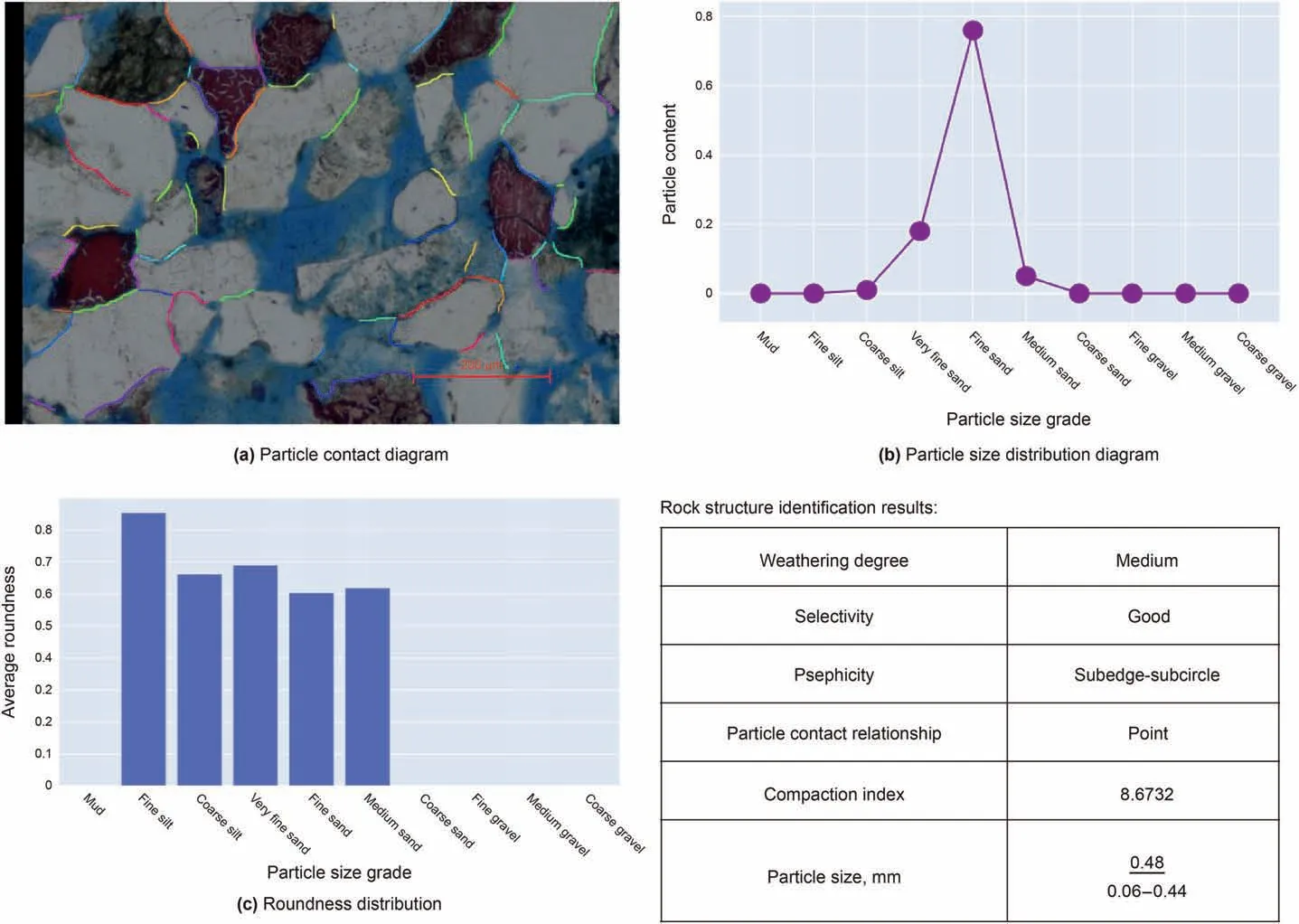
Fig. 21. The identification results of rock structure.
5.2. Quantitative characterization of diagenesis of clastic rocks
The quality of clastic reservoirs is directly affected by sedimentation and diagenesis.The influence of diagenesis on reservoir quality runs through the whole reservoir-forming process. As the exploration operations expand to unconventional resources,diagenesis is more important for reservoir control. The unconventional reservoir evaluation focuses more on the reservoir quality during reservoir forming period and the changes in reservoir quality after reservoir forming period.The reservoir quality during the reservoir forming period may directly determine the scale and performance of the reservoir,whereas the recovery and evaluation of the reservoir during reservoir forming period and the change in reservoir after reservoir forming period need to be based on accurate quantitative characterization of diagenesis. Therefore, the quantitative and fine study of diagenesis will play a more and more important role in future exploration and development.
The quantitative characterization of cementation and dissolution in diagenesis can be realized by identifying the content of authigenic minerals and dissolution pores through thin sections.As a major diagenetic process,compaction can be used to measure and evaluate reservoir quality. At present, academic and industrial circles mostly use descriptive expressions such as "strong compaction", "moderate compaction" and "weak compaction" in practical evaluation, and there is a lack of quantitative standards and indicators of compaction strength. Based on the quantitative data extracted from the intelligent thin-section identifications, the particle contact relationship is determined by using computer vision and other techniques, and the calculation method of the compaction index is constructed. Moreover, by establishing the quantitative relationship between compaction index and pore evolution, combined with the quantitative characterization of cementation and dissolution, we can accurately predict the characteristics of pore evolution and construct an accurate pore evolution history.
5.3. Intelligent logging interpretation assisted by intelligent thinsection identification
Characterized by high resolution and sensitive response,logging curves can effectively reflect the features of the entire drilling profile.However,logging is only the manifestation of acoustic,electrical,and radioactive properties of underground rock components, pore structures, and formation fluids. Only through the accurate calibration of actual rock samples can it have geological significance and establish an accurate interpretation template. So far, a large number of general interpretation templates between logging data and lithology, physical properties, and oil-bearing properties have been established. These templates can effectively reflect the characteristics of lithology, physical properties, and oil-bearing properties of most reservoirs.However,there are still special cases,such as the ubiquitous low resistivity reservoirs. This phenomenon is directly related to some microscopic characteristics of the reservoir.To solve the above problems, we should quantitatively extract the information such as mineral composition and rock structure through intelligent thin-section identifications, establish the relationship between the microscopic characteristics causing anomalies in the formation and logging, correct the interpretation template and improve the success rate of interpretation.With the exploration and development gradually turning to unconventional reservoirs, the reservoirs are found more complex and heterogeneous. The quantitative description of reservoir micro-characteristics based on intelligent thin-section identification is increasingly valuable for the correction of logging interpretation.
Lithology identification is a fundamental work in petroleum geological exploration. Coring and logging curves are the two common tools for lithology identification. In the traditional lithology identification process,geological experiments are first made to accurately identify lithology through thin-section identification;then the corresponding relationship between lithology and logging curve is established through an intersection map, and finally, the lithology of non-cored wells is predicted. Based on the intelligent thin-section identification, the relationship between lithology and logging curve f(x) is established by using integrated learning technology according to the accurately identified lithology.Furthermore, the analytic expressions of f(x) and g(x) are automatically learned from the existing data by using transfer learning technology.Finally,the mapping relationship between cored wells and non-cored wells can be established. In this way, the work efficiency is greatly improved, and the dependence of lithology identification on expert experience is reduced.
6. Conclusions
This paper presents an intelligent identification technology of clastic rock thin-section, which can greatly improve the identification efficiency and reduce the influence of human subjective factors on the identification results. At the same time, due to the integration of the experience of geological experts,the accuracy of the intelligent identification results is high.Because the traditional identification estimates the whole with a local single field of view and depends on visual observation, while the intelligent identification is based on the whole slice samples and uses artificial intelligence technology to realize the quantitative extraction of information. Therefore, the intelligent identification technology proposed in this paper is more comprehensive,intuitive, accurate,and quantitative.
This paper breaks through the multi-target recognition problem of multi-channel images and realizes the intelligent recognition of mineral components by constructing a multi-target recognition network based on CNN+RNN.Aiming at the overfitting problems caused by small samples, this paper develops a fine-grained classification network under multi-angle and multi-mode, which can detect mineral particles of different scales and different forms, to solve the problem of low accuracy of mineral composition identification and pore type identification when the sample size is relatively small. At the same time, this paper adopts the way of modeling while labeling to collect training samples,and forms a set of fast and efficient data labeling schemes.
Intelligent thin-section identification is a complex and systematic technique. It can be applied to clastic rocks, carbonate rocks,igneous rocks, metamorphic rocks, and others and be compatible with polarizing thin-section, cast thin sections, fluorescent thin sections, cathodoluminescent thin sections, etc. Practically, the varying reservoir conditions from region to region and the factors of dissolution,compaction and reservoir heterogeneity bring great challenges to identification and modeling. The intelligent thinsection identification of clastic rocks proposed in this paper is just an outset. In the future, multi-lithology and multi-function intelligent thin-section identification techniques can be expected.It is also worth noticing that intelligent thin-section identification is only a tool, and its application to reservoir research is the focal point. Future studies will deal with the application of intelligent thin-section identification to reservoir evaluation, diagenesis, and sedimentary microfacies identification, aiming to form a set of quantitative and accurate reservoir research methods based on intelligent thin-section identification.
Acknowledgements
This research was supported by the Project of Basic Science Center for the National Natural Science Foundation of China(Grant No.72088101).
- Petroleum Science的其它文章
- Primary logistics planning of oil products under the imbalance of supply and demand
- Advances in enhanced oil recovery technologies for low permeability reservoirs
- A novel method of quantitative evaluation and comprehensive classification of low permeability-tight oil reservoirs: A case study of Jidong Oilfield, China
- Measurement of pore diffusion factor of porous solid materials
- Catalytic oxidation of pentanethiol on basic nitrogen doped carbon hollow spheres derived from waste tires
- Temperature effect on the dynamic adsorption of anionic surfactants and alkalis to silica surfaces

